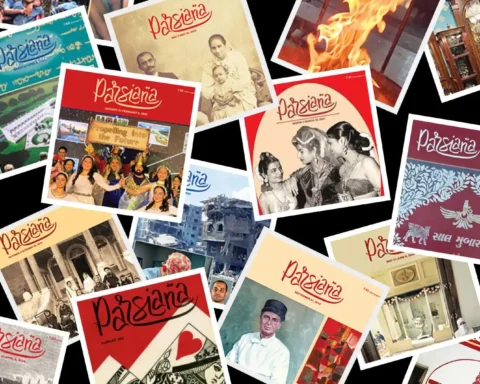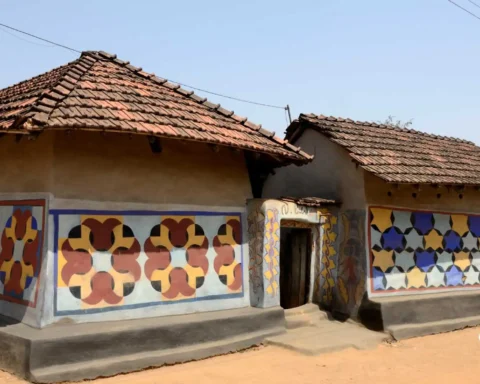Are you a food lover in search of an unforgettable culinary roller-coaster? Welcome to Sindhi Cuisine!
Embraced by the Arabian Sea, The Province of Sindh in the southeast of Pakistan borders Balochistan and Punjab along with the Indian states of Rajasthan and Gujarat. The region’s rich history and cultural tapestry are beautifully held on by the Sindhi people in their mouth-watering Sindhi dishes with much hospitality. Influenced by the Central Asian, Iranian, and Mughlai culinary traditions, Sindhi dishes have journeyed worldwide with their aromatic spices and herbs and vibrant flavours.
We’ve compiled a list of 10 delectable Sindhi dishes that will leave you wanting more.
Table of Contents
A Brief History of Sindhi Dishes
From steaming curries to crispy snacks, the Sindhi cuisine has something to offer for all kinds of tastes. Sindh has been home to numerous cultures throughout the years, with its cuisine capturing its cultural history and amalgamating all the various influences. The foundation of Sindhi food stems from the Indus Valley Civilization. As further discovered from the Mohenjo-Daro excavation, wheat and barley grains were found to be staples in historic Sindhi meals. The land has seen many travellers come and go, leaving their imprint on the culture’s gastronomy.
While Central Asia introduced the inclusion of meat and the love of cumin and coriander, Arab traders familiarised Sindh with new ingredients like dates. Moreover, the Mughals brought with them dried fruits, nuts, yoghurt, and cream.
Although foreign influences have played their part, Sindhi food has a unique taste that is unmatchable by other cuisines. Their proximity to the Arabian Sea brings freshwater fish into their daily meals, and seasonal vegetables are a staple foundation of many Sindhi recipes. Although the 1947 partition led to the mass migration of Sindhis across regions, Sindhi cuisine carries with it a rich history, symbolic of the enduring nature of Sindhis across the globe.
YOU MIGHT BE INTERESTED IN: Remembering the Past: Unveiling the Untold Stories of the Sindhi Diaspora with Saaz Aggarwal
10 Must-Try Sindhi Dishes
Dal Pakwan
One of the most widespread, filling, and indulgent breakfast/brunch Sindhi dishes is, hands-down, Dal Pakwan. While the Dal is made of yellow lentils (usually split Bengal gram), the Pakwan is a crispy flatbread spiced with cumin seeds. Sprinkled with chopped onions, Dal Pakwan is often served with tangy chutneys. In summer, it is usually served with buttermilk, lassis, and rose sharbats. Besides breakfasts, Dal Pakwan is a staple in occasions such as weddings and Diwali. It can even be spotted being sold by street vendors.
Koki
Koki is another authentic Sindhi breakfast dish. It is a type of flatbread (paratha) made of wheat flour, chickpea flour (besan), spices, and herbs. Besides its delicious taste, Koki has a unique texture, being crispy on the outside and soft on the inside. Traditionally, it is served with pickles or yoghurt. If you’ve got a sweet tooth, the Koki can also be made sweet, known as Meethi (sweet) Koki. So grab your Chai and enjoy a delightful Sindhi Koki!
Sai Bhaji
Loaded with nutritious veggies and a source of immense protein, the signature Sindhi Sai Bhaji is a flavourful one-pot meal ideal for lunchtime. With Sai meaning green and Bhaaji meaning vegetables, this Sindhi dish is a delectable mix of vegetables, mostly spinach and lentils, enhanced with numerous spices, ghee and garlic. A favourite in almost all Sindhi households, Sai Bhaaji goes well with many other recipes, such as Koki or rice.
Bhuga Chawal
This classic Sindhi-style rice will have your mouth watering with its aroma in no time! It is usually made with caramelised, fried onions flavoured with garam masala (a mixture of spices originating from the Indian subcontinent). In Sindhi, the word ‘bhuga’ means to cook until brown, hence the name ‘Bhuga Chawal’ (rice). Served with Sai Bhaaji or Maakhmi Dal, Bhuga Chawal makes a complete, delightful Sindhi meal.
Sindhi Kadhi
Kadhi in India generally refers to a yoghurt-based curry known to many regions in the country. However, the Sindhi Kadhi, with its harmonious blend of spices and its use of tangy tamarind pulp, has a taste like no other Kadhi. Traditionally served with hot white rice, this dish is often described as a comfort food for many. If a combination of sweet, spicy, and tangy is your style, the classic Sindhi Kadhi is without doubt a must-try.
Sindhi Biryani
Brought to India from the origins of Persia, the Sindhi Biryani is the most consumed Sindhi dish. With sweet caramelised onions, rich yoghurt, sour juicy tomato, potatoes, chicken or mutton, biryani is simply addicting. While the diverse states of India will introduce you to multiple finger-licking versions of Biryani, Sindhi biryani’s dried plums and green chillies give it a unique sour and spicy flavour.
Chaap Chola
Perfect to beat monsoon blues, Chaap Chola is a lip-smacking Sindhi street food snack. It is made by creating potato patties with a hint of spicy chickpeas and is then deep-fried in a combination of ghee and oil. Enjoy the pitter-patter of the rain with the crunch of these warm Chaap Cholas and a spicy side condiment.
Aloo Tuk
Similar to Chaap Chola, the Sindhi Aloo Tuk is another delicious fried potato snack covered in flavorful Indian masalas. Originating in the Mughal era of India, Aloo Tuk was a popular dish among the royalty. It has now been passed over the generations and is enjoyed by people of all ages. So, if you’re looking for a Chaap Chola for those rainy days, make sure you grab an Aloo Tuk as well!
Bhee Aloo
Bhee in Sindhi translates to the stem of a Lotus flower. As the name suggests, the Sindhi Bhee Aloo is prepared with the lotus stem and potatoes on a base made of tomatoes and onions. With its divine aroma, it can be consumed either as a side dish or as the main course itself, along with rice or flatbread. It is commonly prepared in Sindhi homes for special occasions, be it Diwali, Holi, or weddings.
Khorak/Majoon
If you’re looking for a desert, look no further than Khorak. It can be described as a delicious dry fruit fudge. It is made with whole wheat flour, almonds, pistachios, ghee, and poppy seeds. The addition of dates and Khoya (milk solids) will turn it into a variant called Majoon. Although typically made in winter, Khorak is enjoyed all year round. This dish is quite special to the Sindhi community and is made on many auspicious occasions.
LISTEN TO THIS PODCAST: Sindhi Renaissance: Identity, Politics, and Preservation with Rafay Rashdi
Conclusion
From hearty breakfasts like Dal Pakwan to delightful sweets like Khorak, Sindhi dishes are definitely a culinary adventure with the unique ability to entice all kinds of taste buds. Whether you are a seasonal foodie or a curious one looking to explore different cuisines, these Sindhi dishes will definitely leave a lasting impression. So what are you waiting for? Embark on your journey of the Sindhi cuisine that will make you travel on a delicious journey across time and cultures.
FAQs
Is Sindhi vegetarian or non veg?
Sindhi dishes can be both vegetarian and non-vegetarian. While the personal choice of Sindhis determines whether they choose to eat vegetarian, a study by Dua and Gandhi, 2019 shows that 83% of Sindhis prefer non-vegetarian food, with fish being their favourite.
Is Sindhi food spicy?
Yes, a major characteristic of Sindhi cuisine is its spicy and tangy flavour.
What is the famous sweet of Sindh?
Khorak is one of the most favoured sweets of Sindh, along with Kheerni, which is a creamy milk pudding made with vermicelli and flavoured with green cardamoms and roasted nuts.









